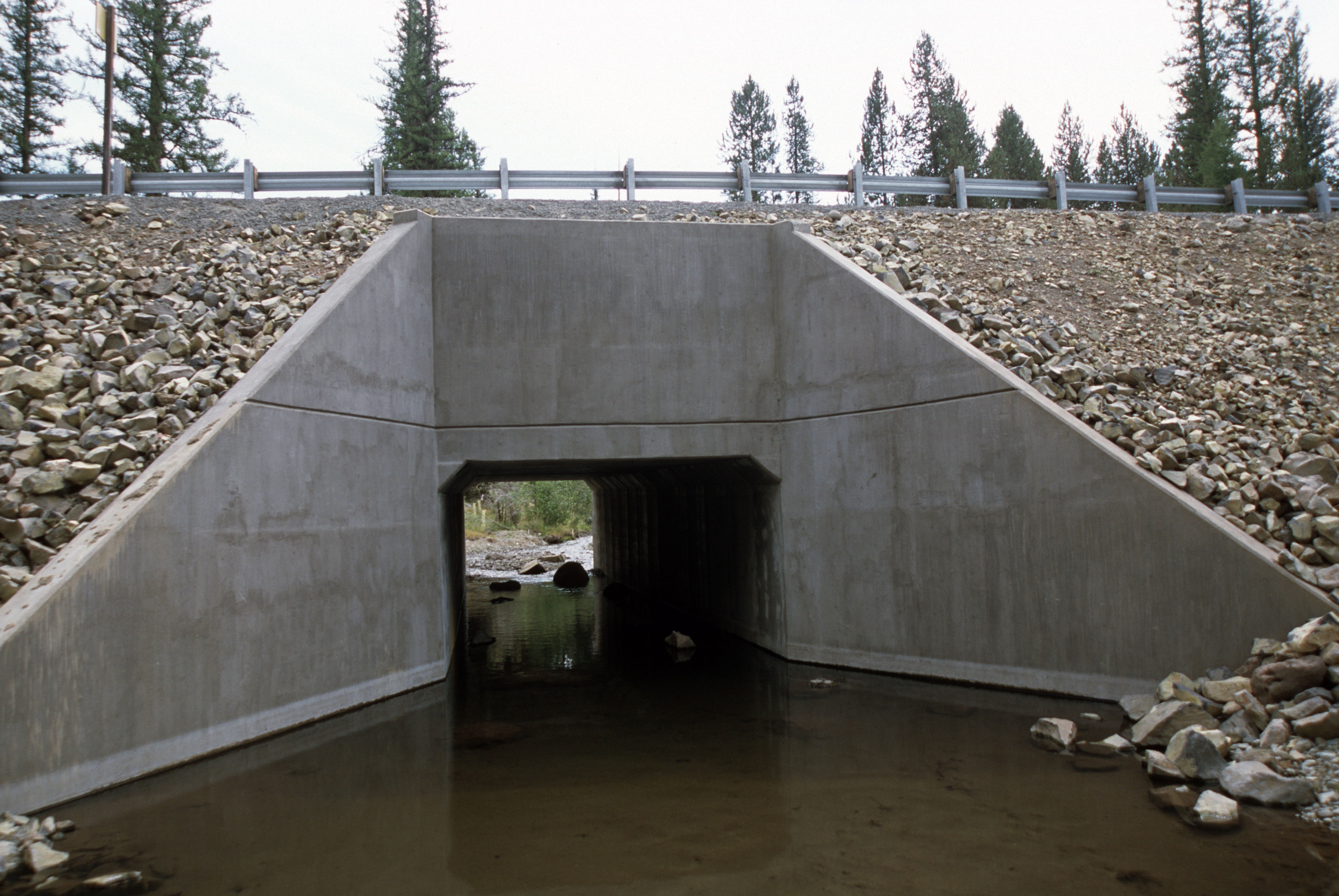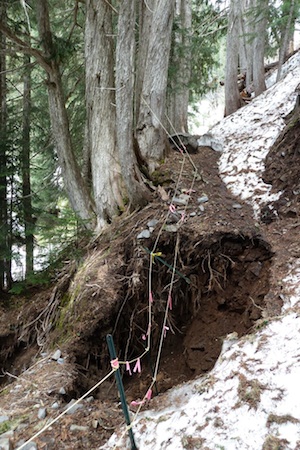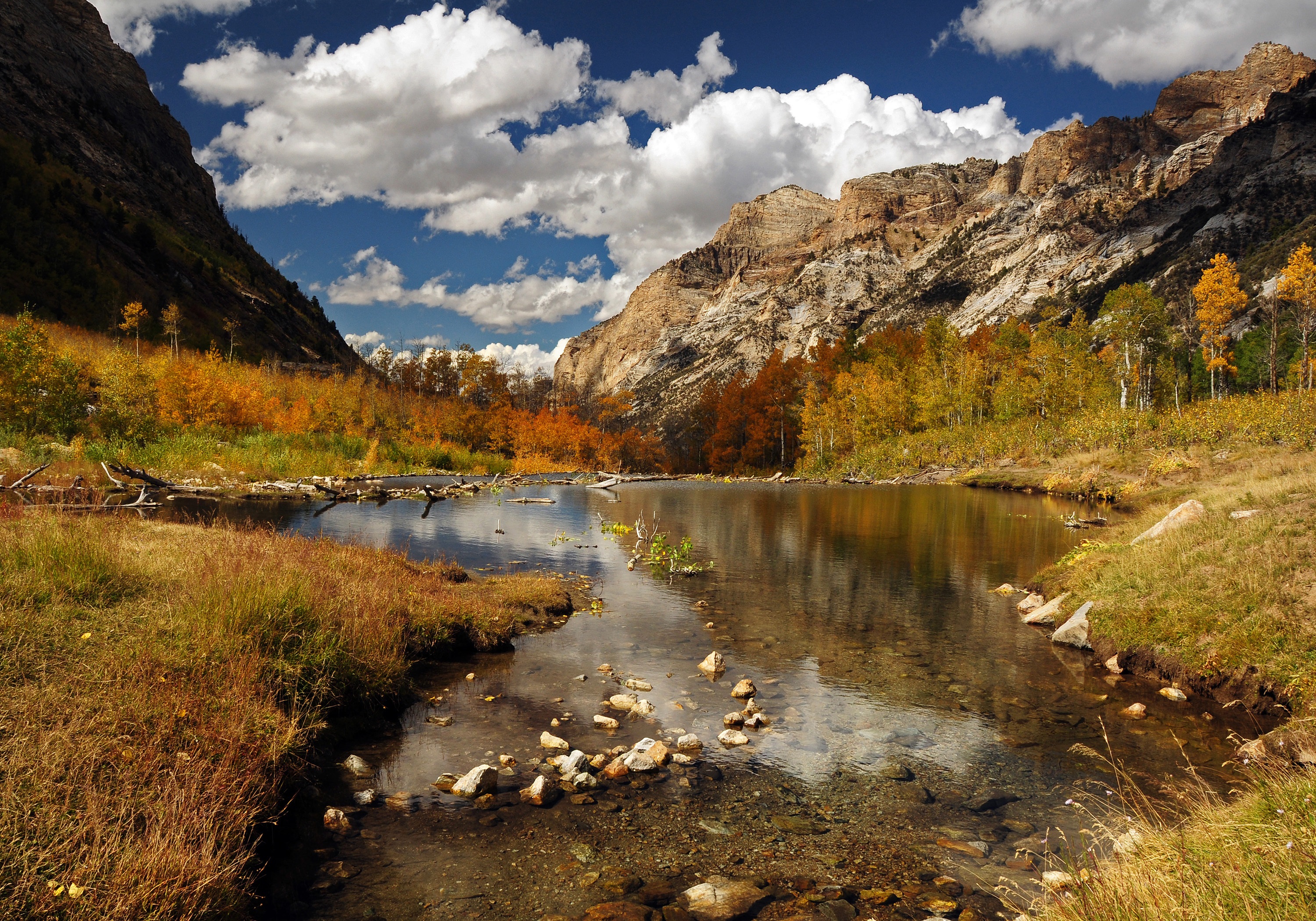Sensitivities
A. Higher winter peak flows will lead to increased damage of roads, bridges, trails, campgrounds, and other infrastructure.
B. Increased winter soil saturation will lead to higher risk of landslides and tree failure, affecting road and trail systems, access, human safety, and water quality.
C. Increasing length of the snow-free season will cause increased demand for access.
D. Lower summer streamflows will cause higher demand and competition for water by municipalities and agriculture.
A. Sensitivity: Higher winter peak flows will lead to increased damage of roads, bridges, trails, campgrounds, and other infrastructure.
Explanation
Warming will affect the amount, timing, and type of precipitation, and timing and rate of snowmelt (Luce et al. 2012, Luce et al. 2013, Safeeq et al. 2013), which will reduce snowpack volumes (Hamlet et al. 2005), and lead to higher winter peak streamflows (Hamlet and Lettenmaier 2007, Hamlet et al. 2013). Higher peak streamflows will lead to increased likelihood of damage to infrastructure, requiring more maintenance and replacement of infrastructure, and road and trail closures (Strauch et al. 2015).
Practices
Increase resilience of roads, stream crossings, culverts, and bridges to higher peak flows
- Conduct inventory of culverts and bridges
- Replace culverts with higher capacity culverts that can accommodate future peak flows
- Consider prioritizing structure replacement in high-risk (mixed-rain-and-snow) watersheds
- Reduce hydrologic connectivity of roads to the stream system by outsloping, increasing rolling dips and cross culverts
- Improve road surfacing, especially at approaches to crossings
- Increase size of drainage structures
- Install more bridges and open bottom culverts
Increase resistance of road surfaces to higher peak flows at stream crossings
- Install hardened stream crossings
- Use grade control structures, humps, and water bars to reduce stream velocity and redirect flow
Reduce the road system to reduce flood damage and sedimentation to streams
- Decommission roads with high risk and low access
- Reroute roads out of floodplains
- Convert use of roads to other modes of transportation (e.g., from vehicle to bicycle or foot)
Increase the ability to protect recreation facilities, historic and cultural sites and points of diversion from flood damage
- Restore watershed function by reconnecting stream channels to floodplains, dispersing flow and reducing the intensity of flood events in campgrounds and other facilities
- Relocate recreation facilities (e.g., bathrooms, picnic tables) to locations that are not likely to flood frequently
- Increase capacity to evaluate and respond to increased hazard trees and to mitigate risk in a timely manner
Increase resilience of trail system to higher peak flows
- Upgrade trail bridges with stronger parent material, if possible
- Reroute trails above waterways with the highest flood risk
- Increase long-range planning to prioritize trail and bridge repair, replacement, and rerouting
- Consider increasing the height of bridges above waterways
- Consider future peak flows in design of new trails and bridges
- Abandon damaged trails with low use and high flood risk
- Reroute trails in locations that eliminate the need for trail bridges
- Increase capacity for trained staff to rapidly conduct hazard tree assessments after disturbances and for the management units to rapidly implement their recommendations
B. Sensitivity: Increased winter soil saturation will lead to higher risk of landslides and tree failure, affecting road and trail systems, access, human safety, and water quality.
Explanation
Climate change projections suggest that winter precipitation may increase in the Pacific Northwest and more winter precipitation will occur in intense storms (Salathé et al. 2014), leading to higher soil saturation. Furthermore, reduced snowpack is expected to increase antecedent soil moisture in winter (Hamlet et al. 2013). Elevated soil moisture and rapid changes in soil moisture can affect the stability of a slope and are responsible for triggering more landslides than any other factor (Crozier 1986).
Practice
Protect roads and structures from higher landslide frequency
- Increase maintenance frequency
- Stabilize slopes mechanically or with vegetation

- Improve drainage
- Alter road surface type and grade
- Elevate roads to allow landslides to pass underneath
- Locate/relocate roads in areas less vulnerable to landslides
- Redesign roads to avoid over-steep cut and fills, and to improve water drainage; design debris catches on major access roads
- Utilize seasonal road closures during most hazardous times of year
- Develop thresholds for forecasted precipitation and wind that will trigger closures, and train staff to understand and implement them.
Increase resilience of the trail system to erosion and landslides
- Increase erosion control with revegetation projects
- Reduce erosion by building protection into trail design
- Reroute high-risk trails
Increase the capacity of staff to rapidly respond and evaluate hazard tree situations
- Increase the capacity to provide staff training and raise awareness of hazard tree policy and practices
- Increase the number of qualified hazard tree assessment specialists.
- Increase the capacity to rapidly communicate and implement the recommendations of the specialists in order to restore safe access and conditions
C. Sensitivity: Increasing length of the snow-free season will cause increased demand for access.
Explanation
Warming temperatures will reduce snowpack (Hamlet et al. 2005) and increase public demand for access to recreation during times when, historically, snow prevented warm-weather recreation activities (Strauch et al. 2015).
Practices
Maintain safe access at the beginning and end of the summer recreation season
- Educate the public about risks associated with early-season and late-season access
- Establish new (or ensure compliance with) existing procedures, thresholds or checklists to safely open trails, campgrounds, and facilities earlier in the season
- Alter seasonal staffing schedules to ensure additional recreation workload is covered
- Ensure that adequate resources are available (e.g., seasonal crews that perform pre-season maintenance, teams of sawyers to remove hazard trees) to accomplish necessary tasks
- Limit access when public safety is a concern
D. Sensitivity: Lower summer streamflows will cause higher demand and competition for water by municipalities and agriculture.
Explanation
Lower snowpack and earlier runoff with warming will lead to lower summer streamflows and less available water during peak demand in summer (Stewart et al. 2005, Luce and Holden 2009, Safeeq et al. 2013).
Practices
Restore function of watersheds to maximize water storage
- Reconnect floodplains and side channels to improve hyporheic and baseflow conditions
- Protect groundwater-dependent ecosystems
- Maintain large wood in forested riparian areas for shade and recruitment to streams
- Promote and increase beaver populations where appropriate
- Promote appropriate livestock grazing management and proper use standards
- Improve water diversions, delivery systems, and livestock distribution; minimize impact to spring sources (e.g., use shut off valves and splitters, locate troughs away from water sources, and locate head boxes away from spring sources)
- Restore meadows
- Manage for highly functioning riparian areas that can absorb and slowly release the flow of water off the landscape
- Conduct vegetation management (e.g., mechanical treatments, prescribed fire, and managed wildfire) to develop appropriate vegetation density, arrangement (clumps, openings, gaps), and composition for optimal water balance and healthy watersheds
Increase water conservation
- Promote facilities with drought tolerant plants (xeriscape)
- Install low-flow, solar, and composting toilets
- Institute gray-water recycling
- Educate the public about water shortage and conservation
- Change user expectations for water availability
- Reduce campground capacity to decrease water demand
- Close facilities when water is not available
Introduction Hydrology, Water Uses, and Infrastructure Forest Vegetation Non-Forest Vegetation
Riparian Areas, Wetlands, and Groundwater-Dependent Ecosystems Fish Habitat and Fisheries Wildlife Recreation References
Climate Risk Management Practices prepared by: J.J. Ho; J.E. Halofsky; D.L. Peterson



